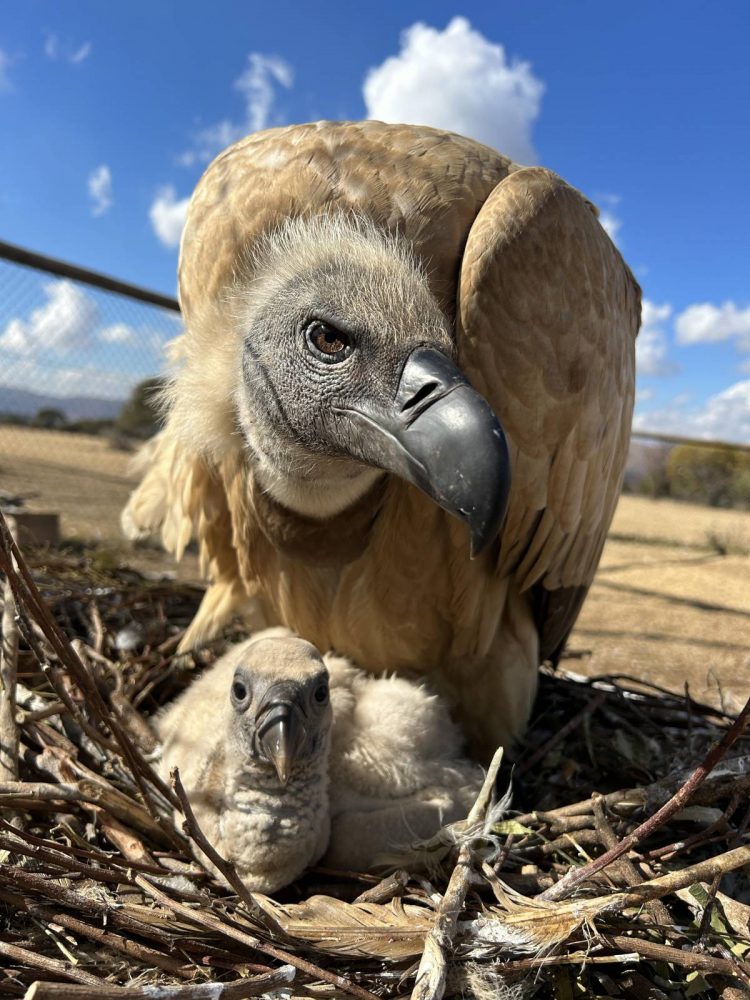
Increased vehicular traffic and better-paved roads in montane environments heighten the risks to wildlife. (File photo by Kerri Wolter)
Animals in mountainous areas around the world — many of which are in the category of conservation risk — are likely to become roadkill as road networks expand further into these previously inaccessible terrains.
These mammals include endangered African wild dogs, vulnerable lions and leopards, endangered elephants and near-threatened honey badgers.
Among the road-killed birds in these areas are the critically endangered hooded vulture and the endangered steppe eagle, said Aliza le Roux, the assistant dean of the faculty of natural and agricultural sciences and a professor in the department of zoology and entomology at the University of the Free State (UFS).
Le Roux, a behavioural ecologist studying how animals respond to risks and opportunities in the environment, last week delivered an oral presentation on mountain biodiversity at the Southern African Mountain Conference.
For their research, Le Roux, Katlego Mashiane — a lecturer in the UFS’s department of geography — and Clara Grilo from the BIOPOLIS project in Portugal, searched for published data and papers from 1971 to 2024 and discovered that most of the literature on roadkill in Africa came from the 21st century.
They found that amphibians were killed at the highest rate in the mountainous regions, while mammals were killed most frequently in the low-lying regions.
“Tonnes of amphibians seem to be killed,” Le Roux said. “I was surprised that we didn’t find endangered amphibians on this list but if you talk about biodiversity in mountains and high-altitude areas, we often find higher endemism and great diversity of species that only occur in those areas, in mountains, especially for smaller species.”
She wonders whether data was missed for amphibians and birds. “With a large species, it’s easy to see what was killed but the small ones, less than 1kg, you can miss it; it can be flattened beyond recognition.”
Mammalian species classified as near threatened or more vulnerable to extinction on the International Union for Conservation of Nature (IUCN) Red List were most frequently found in the high-elevation mountains (7.7% of species killed in these areas), but also in low-lying areas (3.8% of mammalian roadkill). About 3% of the birds killed at moderate elevations were also of conservation concern.
Le Roux said that increased vehicular traffic and better-paved roads in montane environments heighten the risks to wildlife in these regions.
Unpredictable weather patterns and sudden topographical changes contribute to these roads potentially being more hazardous for both drivers and wildlife.
The researchers estimated the roadkill rates for each observed species and then analysed the correlation with topographic aspects of the study sites.
They used the 90m digital elevation model downloaded from the geospatial cloud-computing platform Google Earth Engine and classified “high” elevation mountains as regions lying above 2 000m above sea level, “moderate” elevation mountains as lying between 1 500 and 2 000m above sea level and “low” regions as areas below 1 500m above sea level.
Le Roux and Mashiane also extracted slope and the topographic ruggedness index. Roadkill rates were estimated for 15 different amphibian species, 98 reptilian, 261 avian and 273 mammalian species, comprising 5 549 individual road kills.
“The accidents in mountainous areas are something to be aware of, as we are moving further into mountains where there is often vulnerable and unique biodiversity,” she said.
“We didn’t used to access these high areas so much and now we’re expanding for good reason. We need infrastructure development on the continent but this is now a risk that we haven’t taken into account.”
Mediating that risk will be difficult. “When you look at what people do to mediate risk to large animals, often they create overpasses or wildlife crossings. How do you do this safely on a windy road?”
The researchers cannot say what the continental patterns are because very little data is available about biodiversity and roadkill patterns in the central and western parts of the continent.
The data they found came from only 10 countries — and almost none of the studies took the form of systematic, longitudinal monitoring. The data sets were all “snapshots” of roadkill in specific areas.
Le Roux’s interest in roadkill research started several years ago in her work on bat-eared foxes and yellow mongoose.
“It seemed, especially with the bat-eared foxes, that you find them frequently dead on the roads, especially where I worked up in the Kalahari. You would sometimes see entire little families wiped out,” she said.
She was curious to see what the causes were and started a collaboration with the Endangered Wildlife Trust (EWT), which was also researching roadkill. It had an app using citizen scientists to collect data from across the country on the roadkill that they saw.
“We also published a paper on this citizen science data that was collected specifically for South Africa and we did find again that especially these small carnivores — the yellow mongoose, the bat-eared foxes and even the jackals … they are among the top three, sometimes top five, of roadkill, depending on the area.”
The African roadkill research presented at the Southern African Mountain conference stemmed from the EWT collaboration.
“They put me in touch with Clara Grilo, whose research group focuses on patterns of roadkill. For this particular project, I was the representative from Africa. There’s research happening across the globe on roadkill as part of this larger collaboration,” she said.
Le Roux, who is part of the UFS’s Afromontaine research unit, lives among the mountains and drives through them daily.
“I was thinking … maybe we shouldn’t just be worrying about the species that are being killed; maybe we should also be looking at where the roads are and how the roads look, whether that doesn’t also affect roadkill because it’s not just the animals’ responses to us; it’s also our responses to the environment,” she said.
“I looked at the data again but from the perspective of trying to see how ruggedness and elevation affect the patterns that we can currently see. For this specific project, we started from Africa but we are considering expanding it to the rest of the globe, too.”



